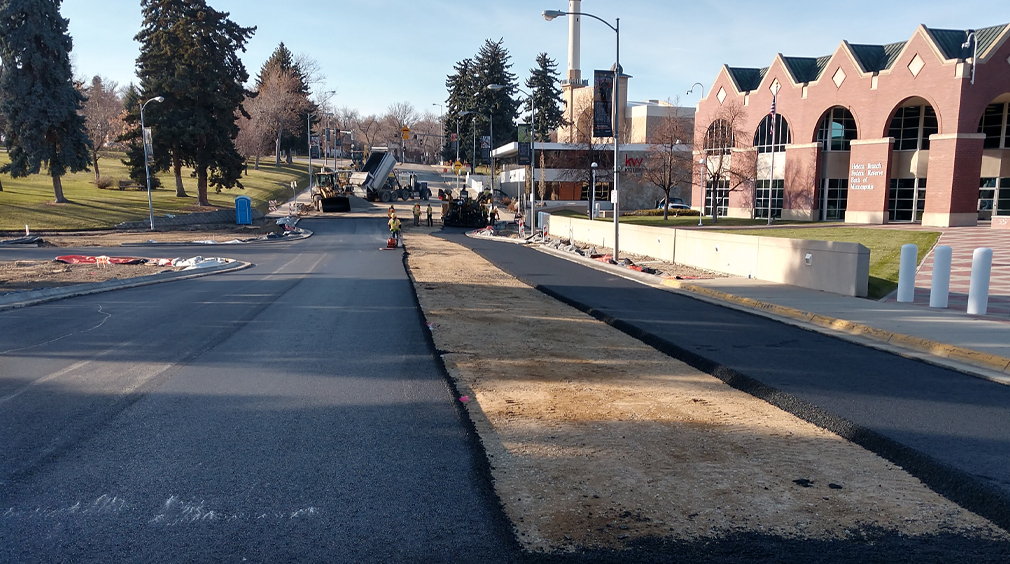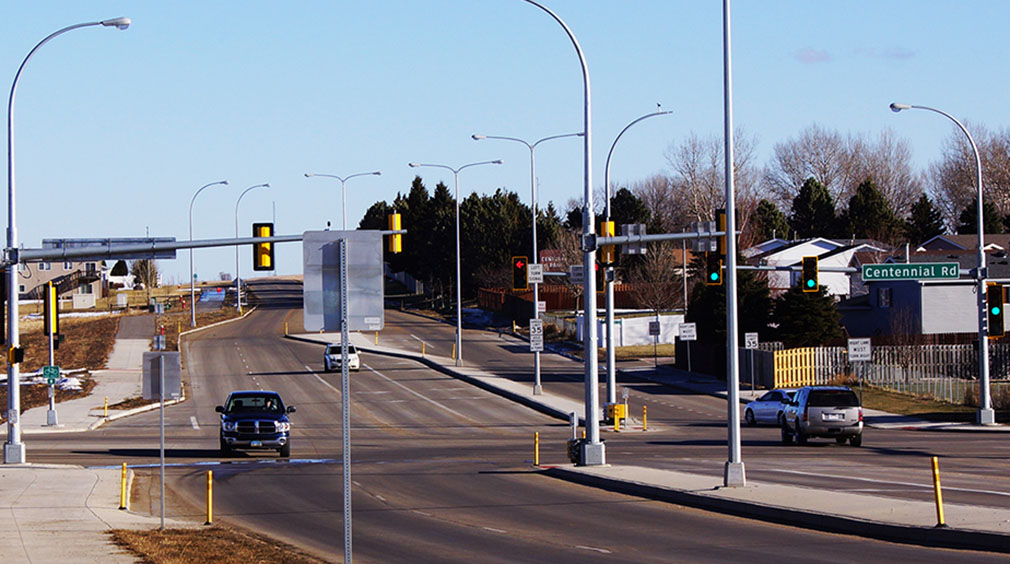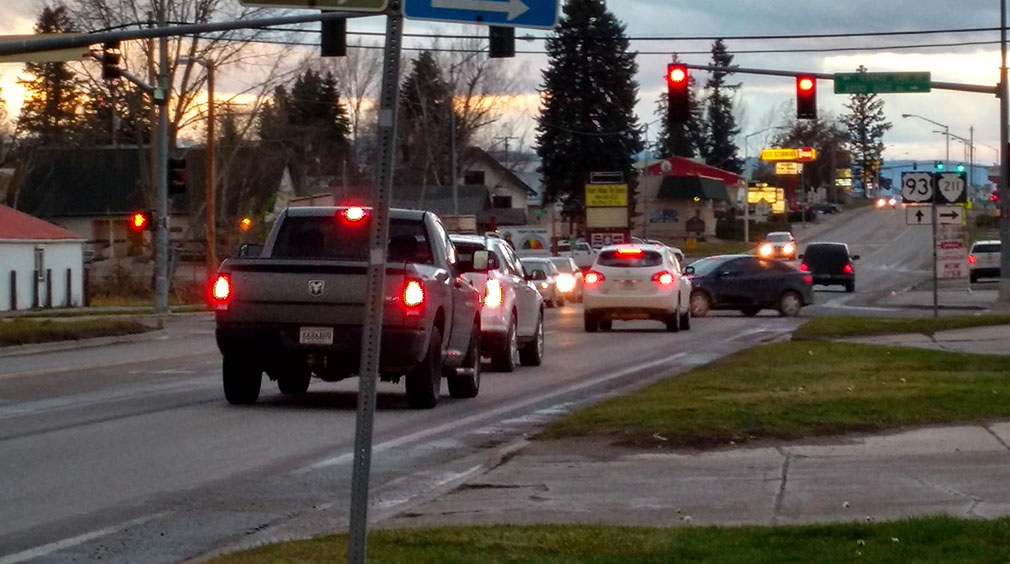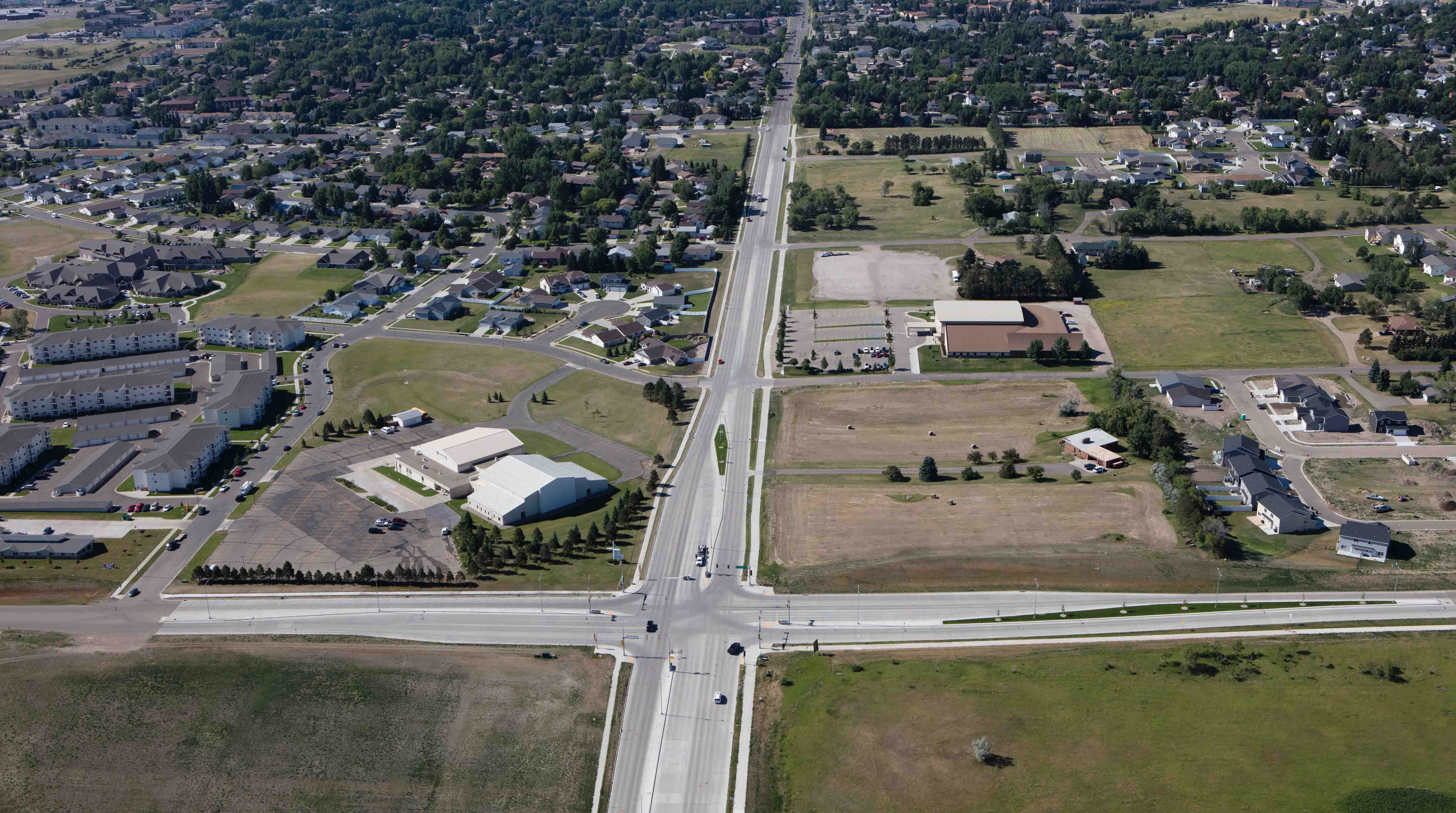PROJECT
Helena’s Front Street corridor is located within the Last Chance Gulch, a large watershed comprised of historic downtown Helena and the rural watersheds of Orofino Gulch and Grizzly Gulch. The storm drain system, originally constructed in the early 1900s, was in poor condition and was significantly undersized for a major storm event. Additionally, the storm drain alignment was underneath privately-owned buildings and parking lots. Although significant flood damage has not occurred, shallow flooding is common near the end of Front Street. Based on the City’s InfoSWMM hydraulic model, the storm drain system could not support a 25-year storm event, which is Helena’s design standard.
The water main on Front Street also needed repairs and upgrades. Several areas in downtown Helena had undersized water mains, older mains with low hydraulic efficiency, and dead-end segments. This contributed to the inadequate fire flow capacities along the Front Street corridor. The water main consisted of 6- to 8-inch cast iron and ductile iron pipe installed in the 1960s and 1980s. The older cast iron pipe was believed to be in deteriorating condition, but replacement would require significant street reconstruction.
About 80 percent of Front Street’s pavement needed repair and several segments of sidewalk were missing, damaged, or did not meet ADA accessibility standards. The Front Street improvement project was outlined in Helena’s Long-Range Transportation Plan, Downtown Master Plan, and Greening Last Chance Gulch report.
SOLUTION
KLJ worked with the City to design a project that met the needs outlined in each City plan. Each alternative was reviewed by City engineering staff and presented to landowners, businesses owners, and the general public for feedback before an alternative was selected. In 2017, we developed plans for storm drain updates, water main updates, and improved streetscape aesthetics with bicycle and pedestrian facilities.
Roadway
Roadway improvements included bulb-outs at intersections, wider and ADA-accessible sidewalks, shared-use lanes, angled and parallel parking and landscaping. A raised intersection was constructed at Neill Avenue. It is the first such intersection constructed on a Montana Department of Transportation urban route. KLJ redesigned and reconstructed the intersection at Fuller Avenue and replaced the Y-intersections at Neill and Fuller Avenues with traditional, stop-controlled T-intersections. The existing shared-use path at Lyndale Avenue was lowered and connected to the new sidewalk to enhance accessibility. To maintain the grade of Lyndale Avenue, a gravity block retaining wall was built alongside the lowered portion of the path.
Storm Drain
During the project design, KLJ reviewed the hydraulic model and determined that a 60-inch storm drain with additional inlets would convey the 25-year storm event per the City’s design standard. The new design also included a section of 84-inch storm drain at the end of the corridor to convey surface water as well as two 12-foot manholes – one to connect the new 60-inch reinforced concrete pipe (RCP) to the existing 48-inch brick arch pipe and one to accommodate the storm drain size from 60-inch to 84-inch RCP. Multiple in-line tee manholes were constructed as well.
KLJ and the City coordinated with adjacent property owners to connect existing roof drain systems to the new storm drain system. In some places, this only included extending the pipe to the storm drain. In others, it required the installation of 12-inch storm drains and manholes to provide draining in an existing parking lot. Additionally, the design of the Neill Avenue intersection included a new 48-inch RCP storm drain to Fuller Avenue and a new 24-inch main extended to connect to the existing storm drain. The design incorporated multiple inlets, including three 84-inch combination inlets.
Water Main
KLJ replaced the water main with new 8-inch PVC. From 14th Street to the end of the project corridor, a temporary water system was installed above ground to provide water to local business during construction. After installation, pressure testing, and bacteria testing, business water service and/or fire service was reconnected. Installing the water main was challenging due to the presence of private utilities as well as a large storm drain within the narrow corridor.





RESULTS
After significant public input in every phase of planning and alternative selection, Front Street improvements were constructed in three phases. With close coordination between KLJ, the customer, and stakeholders, all project work was completed within the 2019 construction season. Upon construction completion, 57 trees, 72 shrubs, new sod, and more than 400 new annual plants were planted to improve the environment and aesthetics of the corridor.
This project was named the APWA Rocky Mountain Chapter 2019 Project of the Year.



